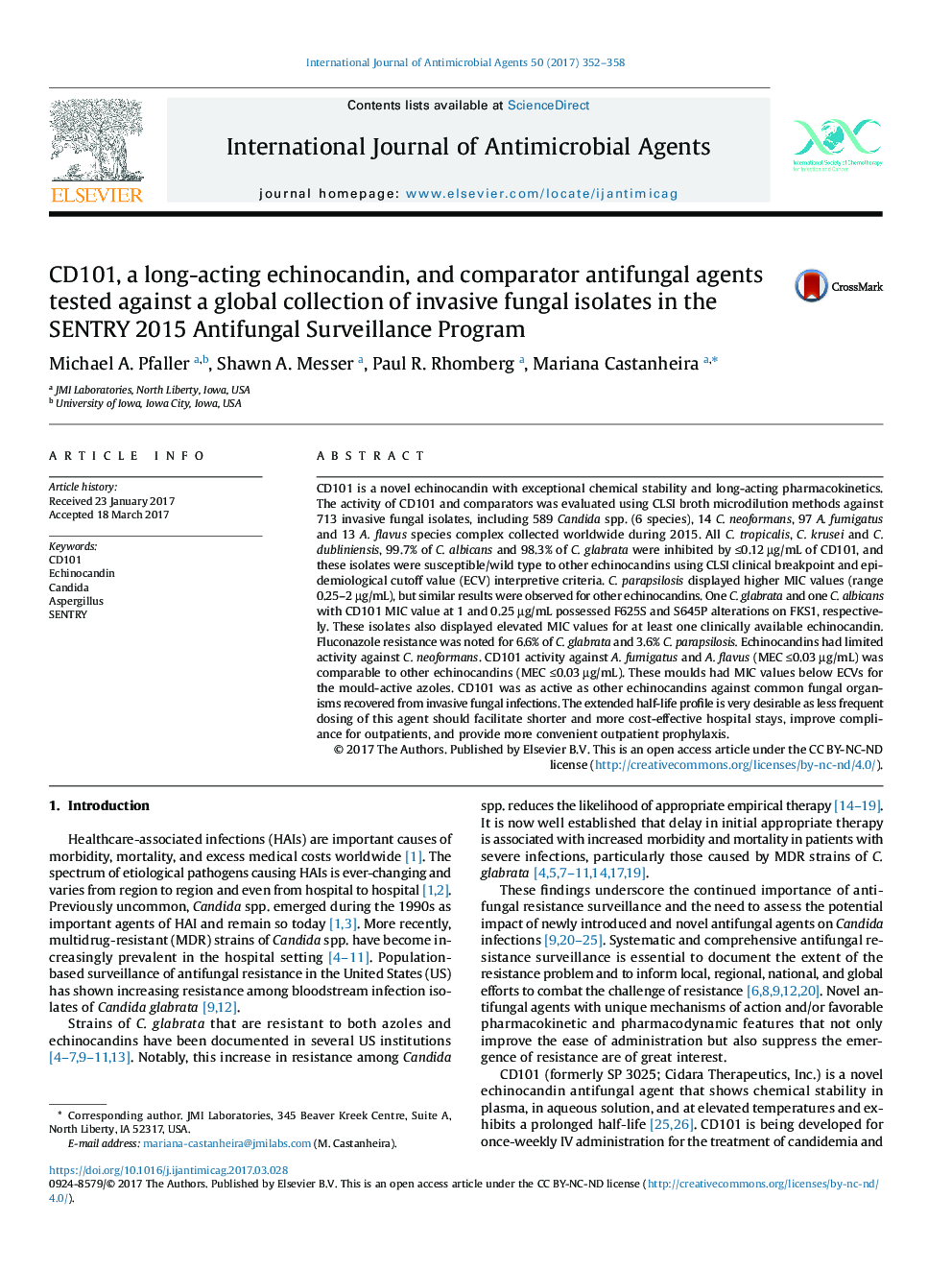| Article ID | Journal | Published Year | Pages | File Type |
|---|---|---|---|---|
| 5666788 | International Journal of Antimicrobial Agents | 2017 | 7 Pages |
â¢CD101 is a novel echinocandin with an extended half-life and can be dosed once a week.â¢The activity of CD101 and comparators was evaluated using CLSI broth microdilution methods.â¢A total of 713 invasive fungal isolates collected worldwide during 2015 were evaluated.â¢CD101 activity was comparable to that of other echinocandins against Candida spp. and Aspergillus spp.â¢FKS HS-mutant Candida spp. and Cryptococcus spp. displayed elevated CD101 and echinocandin MICs.â¢CD101 will be a valuable addition to treatment options for invasive fungal infections.
CD101 is a novel echinocandin with exceptional chemical stability and long-acting pharmacokinetics. The activity of CD101 and comparators was evaluated using CLSI broth microdilution methods against 713 invasive fungal isolates, including 589 Candida spp. (6 species), 14 C. neoformans, 97 A. fumigatus and 13 A. flavus species complex collected worldwide during 2015. All C. tropicalis, C. krusei and C. dubliniensis, 99.7% of C. albicans and 98.3% of C. glabrata were inhibited by â¤0.12âµg/mL of CD101, and these isolates were susceptible/wild type to other echinocandins using CLSI clinical breakpoint and epidemiological cutoff value (ECV) interpretive criteria. C. parapsilosis displayed higher MIC values (range 0.25-2âµg/mL), but similar results were observed for other echinocandins. One C. glabrata and one C. albicans with CD101 MIC value at 1 and 0.25âµg/mL possessed F625S and S645P alterations on FKS1, respectively. These isolates also displayed elevated MIC values for at least one clinically available echinocandin. Fluconazole resistance was noted for 6.6% of C. glabrata and 3.6% C. parapsilosis. Echinocandins had limited activity against C. neoformans. CD101 activity against A. fumigatus and A. flavus (MEC â¤0.03âµg/mL) was comparable to other echinocandins (MEC â¤0.03âµg/mL). These moulds had MIC values below ECVs for the mould-active azoles. CD101 was as active as other echinocandins against common fungal organisms recovered from invasive fungal infections. The extended half-life profile is very desirable as less frequent dosing of this agent should facilitate shorter and more cost-effective hospital stays, improve compliance for outpatients, and provide more convenient outpatient prophylaxis.
